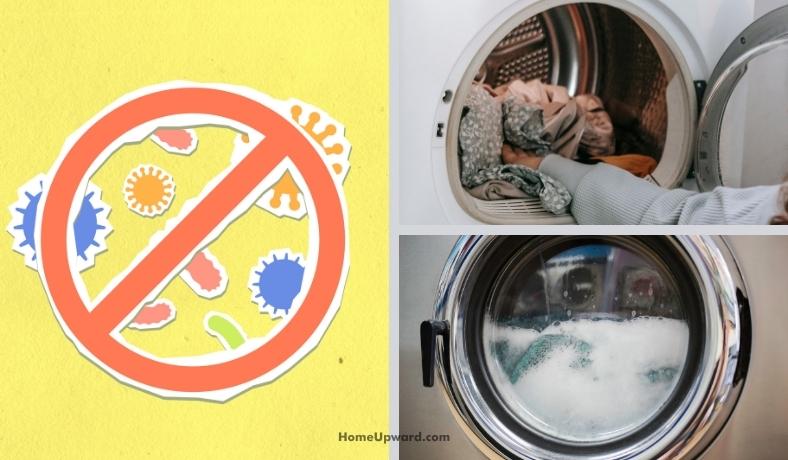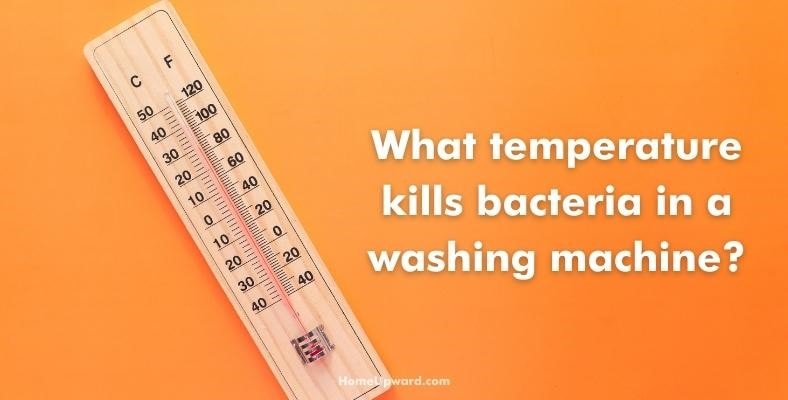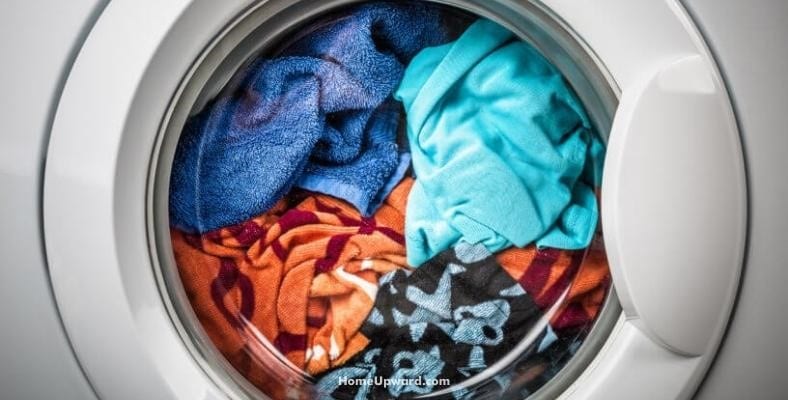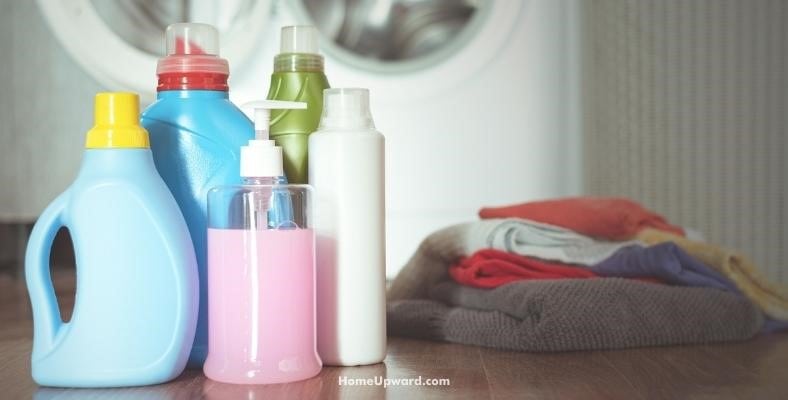Contents
- What temperature kills bacteria in a washing machine?
- What kind of bacteria and germs can be in a dirty washing machine?
- Can bacteria survive in a washing machine?
- Are there laundry detergents that are anti-bacterial?
- Do clothes dryers kill bacteria?
- How to do a maintenance clean for your washer and kill bacteria
What temperature kills bacteria in a washing machine?
The water temperature needed to kill bacteria in a washing machine is 60 degrees Celsius or 140 degrees Fahrenheit. This temperature is very hot but still well below boiling.
It’s important to reach a suitable water temperature when running your washing machine because dirty laundry can carry all sorts of different pathogens. Laundry can come in contact with E. coli, salmonella, rotavirus, and other particles that can cause serious disease.
If the water temperature in your next load of laundry does not reach this minimum temperature, it may not be able to kill these dangerous pathogens. That leaves you and your loved ones at risk of coming into contact with these harmful germs.
Some homeowners choose a lower temperature as an option that is gentlest on their clothing’s fabric and the best choice for a healthier planet.
Energy-efficient temperatures and other notes
A temperature of 30 degrees Celsius or 86 degrees Fahrenheit is the most energy- and cost-efficient setting, but a stronger detergent is needed for the wash cycle to be effective. Look for cool water laundry detergent to maximize the power of this laundry setting.
For laundry settings that use a water temperature of 60 degrees Celsius or 140 degrees Fahrenheit, bacteria will be effectively killed, and stains will be removed. However, this setting is more expensive to run each cycle.
Some laundry settings can reach 90 degrees Celsius or 194 degrees Fahrenheit, a temperature close to boiling your laundry. This is extremely useful to remove stains and any harmful bacteria, but this high temperature can damage fabrics and should be used sparingly.
If you choose not to reach this minimum 60 degrees Celsius temperature for your regular laundry cycles, there are other easy steps you can take to enjoy disinfected laundry and reduce your exposure to these pathogens.
What kind of bacteria and germs can be in a dirty washing machine?
Your washing machine can be a breeding ground for harmful bacteria. These kinds of bacteria are germs you actively fight against when you use proper cooking techniques and practice proper hand hygiene.
However, many of these same germs can easily live and grow within a washing machine that is not properly disinfected on a regular basis. An average single pair of underwear can contain a tenth of a gram of fecal matter, bacteria that may remain after the wash cycle is complete.
These germs can include well-known villains found in raw meat or that are passed through infectious diseases. Bacteria like E. coli, salmonella, staphylococcus, norovirus, and rotavirus can be found, which may cause pneumonia, cramps, diarrhea, vomiting, and other issues.
These are particularly dangerous if you have vulnerable people in your home, like the elderly, young children, or the immuno-compromised.
Can bacteria survive in a washing machine?
Yes! Bacteria can survive in a washing machine that has not achieved either a high enough water temperature or does not have a strong enough disinfecting detergent to kill the pathogens carried on the average piece of clothing.
Because this bacteria can survive in a washing machine, the bacteria can be transferred to the clothes that you unload from the drum. This means you and your loved ones may interact with lingering germs that cling to clothing that has not been thoroughly disinfected.
Even if the particles do not transfer to your clothing, the germs can still remain within the warm, damp conditions of your washing machine. This means harmful bacteria can stick around and transfer to your next load of laundry.
Are there laundry detergents that are anti-bacterial?
Yes. Some laundry detergents on the market claim to be antibacterial. This is a powerful partner in the fight against harmful bacteria living in your washing machine, especially if you prefer to use a lower temperature setting on your wash cycles.
Many leading detergent manufacturers offer an antibacterial option, including Tide and Arm and Hammer. These new formulas promise to kill harmful germs in your wash cycles, but that does not mean they are going to be harsh detergents.
Antibacterial laundry detergents come in a variety of different forms that also offer other benefits. Often antibacterial laundry detergents also come with powerful stain removers, odor eliminators and can be free of fragrance and gentle on sensitive skin.
Do clothes dryers kill bacteria?
If you have grabbed clothes right out of the dryer and accidentally rested your hand against any metal pieces inside, you may think your dryer is hot enough to kill bacteria. While every dryer is different, most do not reach the minimum temperature required to kill harmful germs.
As detailed above, a temperature of 60 degrees Celsius or 140 degrees Fahrenheit is needed to kill the dangerous pathogens that may linger in your laundry. However, many dryers only reach just below that — temperatures of about 130 degrees Fahrenheit or about 54 degrees Celsius.
It is best not to rely on your clothes dryer to kill the bacteria that may still remain on your clothes. Instead, choose the hot water setting on the washing machine for contaminated loads of laundry, or perform a maintenance clean to help keep you and your family safe.
How to do a maintenance clean for your washer and kill bacteria
Similar to the recommended cleaning routine for your coffee machine or dishwasher, a maintenance clean is a cycle done without anything inside of the machine. You will not enjoy a finished product from a maintenance cycle, but it’s a great and easy way to kill bacteria.
What is a maintenance wash for a washing machine?
A maintenance wash means you simply run your washing machine at its highest temperature without adding any clothing or other laundry to the drum. Your machine will complete a full wash cycle, getting the hottest possible water in every nook and cranny to kill germs hiding inside.
Commonly, a maintenance wash will run at 90 degrees Celsius or about 194 degrees Fahrenheit. This temperature could damage clothing or other laundry items, but since the machine is empty, you instead experience all the benefits of a complete disinfection.
How often should you do a maintenance wash for your washer?
Try a maintenance wash about once a month to keep harmful bacteria out of your washing machine and clothes. It is recommended to perform more frequent maintenance washes if you have an illness going through your home or if items like cloth diapers or mop heads are frequently washed.







